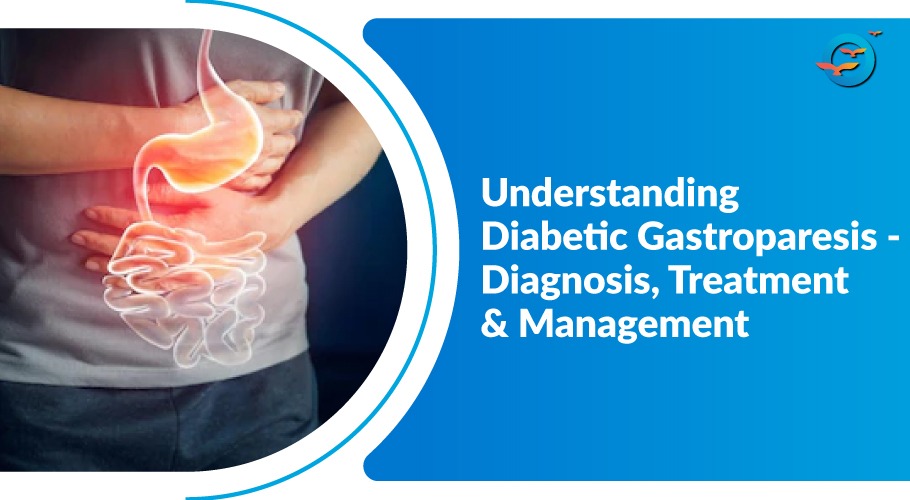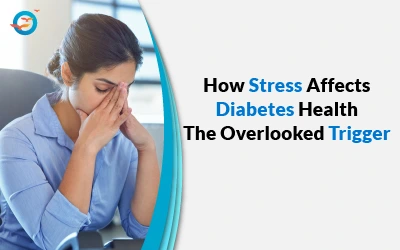What is Type 2 Diabetic Gastroparesis? Causes, Symptoms, and Treatment

Are you living with Type 2 Diabetes and struggling with poor digestion? Gastroparesis may be the culprit. This condition affects millions of individuals worldwide, causing delayed stomach emptying and a range of uncomfortable symptoms.
If you're looking for a comprehensive guide to understanding this complex disorder, look no further! In this post, we'll break down everything you need to know about Type 2 Diabetic Gastroparesis – from causes and risk factors to diagnosis and treatment options. So let's get started on the journey towards better digestive health!
What is Type 2 Diabetic Gastroparesis?
Type 2 diabetes is a chronic condition that affects the way your body metabolizes glucose (sugar). Glucose is the body’s main source of energy and comes from the food you eat. Insulin, a hormone produced by the pancreas, helps cells use glucose for energy. In type 2 diabetes, either your body doesn’t produce enough insulin or the cells don’t respond properly to insulin, causing a buildup of sugar in your bloodstream. Type 2 diabetes can also cause gastroparesis, a condition in which your stomach muscles stop working properly and food moves too slowly through your digestive system.
Gastroparesis can make it difficult to control blood sugar levels and may lead to an official diagnosis of type 2 diabetes. The symptoms of gastroparesis include nausea, vomiting, bloating, abdominal pain, and weight loss. If you have any of these symptoms, it’s important to see a doctor so they can run tests to determine if you have gastroparesis. There is no cure for gastroparesis, but treatments are available to help manage symptoms and improve quality of life.
Causes of Type 2 Diabetic Gastroparesis?
Type 2 diabetic gastroparesis is a condition in which the muscles of the stomach are unable to contract properly, resulting in delayed emptying of the stomach. Gastroparesis can cause a variety of symptoms, including nausea, vomiting, abdominal pain, bloating, and early satiety (feeling full after eating only a small amount of food).
The precise cause of type 2 diabetic gastroparesis is unknown, but it is thought to be due to a combination of factors. First, type 2 diabetes itself can damage the nerves that control the muscles of the stomach (the vagus nerve), which can lead to gastroparesis. In addition, some medications used to treat type 2 diabetes (such as metformin) can also cause or contribute to gastroparesis. Other conditions that are associated with type 2 diabetes (such as obesity) may also play a role in causing or worsening gastroparesis.
Treatment for type 2 diabetic gastroparesis typically focuses on relieving symptoms and improving quality of life. Dietary changes, such as eating smaller meals more frequently and avoiding high-fat foods, may help ease symptoms. In some cases, medication may be necessary to control nausea and vomiting or help empty the stomach more effectively. For severe cases of gastroparesis that do not respond to other treatments, surgery may be an option.
Symptoms of type 2 Diabetic Gastroparesis?
There are a number of symptoms that can be associated with type 2 diabetic gastroparesis, and they can range from mild to severe. The most common symptom is delayed emptying of the stomach, which can cause nausea, vomiting, bloating, abdominal pain, and weight loss.
Other symptoms can include heartburn, GERD, diarrhea, and constipation. In some cases, patients may also experience dizziness, fatigue, and mood swings. If you are experiencing any of these symptoms, it is important to talk to your doctor so that you can get a proper diagnosis and treatment plan.
How Is Type 2 Diabetic gastroparesis Diagnosed?
There are several ways that doctors can diagnose gastroparesis. These include:
- A medical history and physical examination. This can help your doctor rule out other possible causes of your symptoms, such as ulcers or dumping syndrome.
- Eating a meal and then measuring how long it takes for your stomach to empty. This is called the gastric emptying study. A small tube will be inserted through your nose into your stomach. You will then be given a radioisotope-tagged meal to eat. The amount of radioactivity in your stomach will be measured over the next few hours to determine how quickly your stomach is emptying.
- An upper GI endoscopy. This involves passing a thin, flexible tube equipped with a camera down your throat and into your stomach. Your doctor can use this to look for any signs of damage to your stomach lining or pyloric valve (the valve that controls the flow of food from the stomach into the small intestine).
- A gastric emptying breath test. For this test, you will drink a liquid containing a radioactive substance called carbon-14 urea. Once the urea reaches your stomach, it gives off carbon dioxide gas. You will breathe into a machine that measures the amount of carbon dioxide in your breath over the next few hours. The more carbon dioxide there is, the slower your stomach is emptying.
Diabetic Gastroparesis management and treatment
When it comes to managing and treating type 2 diabetic gastroparesis, there are a few things to keep in mind. First and foremost, it’s important to keep your blood sugar levels under control. This can be done by following a healthy diet, maintaining a regular exercise routine, and monitoring your blood sugar levels regularly.
If you’re taking medication for your diabetes, it’s important to closely follow the instructions from your doctor or pharmacist. This includes taking the medication as prescribed and not skipping doses. It’s also important to watch for side effects of your medication and report them to your doctor right away.
In some cases, gastroparesis can be managed with dietary changes. For example, eating smaller meals more often throughout the day rather than three large meals. It’s also important to avoid high-fat foods, spicy foods, citrus fruits, caffeine, and alcohol. Making these changes can help improve symptoms of gastroparesis and make it easier to control your blood sugar levels.
If dietary changes aren’t enough to manage your symptoms, there are a few other treatment options available. Medications such as metoclopramide (Reglan) and erythromycin can help improve stomach motility and relieve symptoms of nausea and vomiting. However, these medications can have side effects so it’s important to discuss them with your doctor before starting any new medication.
Diet and Lifestyle Changes for People with Type 2 Diabetic Gastroparesis
Making dietary and lifestyle changes is an important part of managing type 2 diabetic gastroparesis. The following are some suggestions to help you make changes that may improve your symptoms:
- Eat small, frequent meals and snacks throughout the day. Avoid large meals.
- Choose low-fat and easy-to-digest foods.
- Limit high-fiber foods, as they can slow digestion.
- Avoid spicy foods, as they can irritate the stomach.
- Stay hydrated by drinking plenty of fluids throughout the day, including water, clear juices, and decaffeinated tea or coffee. Limit alcoholic beverages.
- Quit smoking if you smoke. Smoking can worsen gastroparesis symptoms.
Tips on Avoiding Complications of Type 2 Diabetic Gastroparesi
One of the most serious complications of type 2 diabetes is gastroparesis, a condition in which the stomach muscles stop working properly. This can cause food to sit in the stomach for too long, leading to nausea, vomiting, and weight loss. Gastroparesis can also make it difficult to control blood sugar levels.
There are a few things you can do to avoid complications from gastroparesis:
- Avoid high-fat foods. Fatty foods take longer to digest and can make symptoms worse. Stick to lean protein, fruits, vegetables, and whole grains.
- Eat smaller meals more often. This will help your stomach empty more slowly and avoid big swings in blood sugar levels.
- Avoid caffeine and alcohol. These can irritate the stomach and make symptoms worse.
- Take your medications as prescribed by your doctor. Medications can help control nausea, vomiting, and other symptoms of gastroparesis.
Are you tired of living with diabetic gastroparesis? Well, FFD has good news for you! From the above information, it is clear how important it is to manage sugars and we are here to help. Our team not only assists in managing sugar levels but also specializes in reversing diabetes altogether - making medication unnecessary.
Attend our introductory program DRS where you will gain insight on how this miraculous reversal happens. Once ready to begin your journey towards reversing diabetes and keeping gastroparesis at bay, join our yearly program HTP. Say goodbye to the discomfort and frustration that comes with diabetic gastroparesis and hello to a life full of health and happiness thanks to FFD!
FAQs
What is Type 2 Diabetic Gastroparesis?
Type 2 diabetic gastroparesis is a condition in which the muscles of the stomach are unable to contract properly, resulting in delayed emptying of the stomach.
What are the symptoms of diabetic gastroparesis?
The most common symptom is delayed emptying of the stomach, which can cause nausea, vomiting, bloating, abdominal pain, and weight loss.
How is diabetic gastroparesis diagnosed?
Gastroparesis is diagnosed through a gastric emptying study, upper GI endoscopy, or a gastric emptying breath test to measure how quickly food leaves the stomach.
What treatments are available for diabetic gastroparesis?
This can be done by following a healthy diet, maintaining a regular exercise routine, and monitoring your blood sugar levels regularly.

